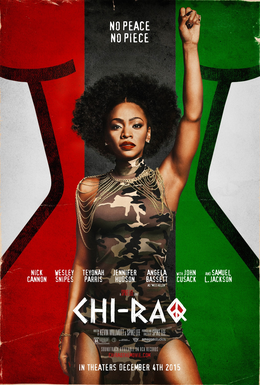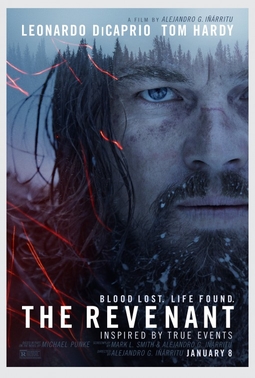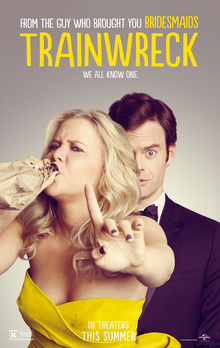See, your tune's changed already, hasn't it?
Anyway, 2015 was a year marked by a pretty eclectic set of films, both big and small, so let's get started. This list is in no particular order because I don't believe in ranking movies.
I'll never be polled for Sight & Sound now, I guess.
Inside Out (dir. Pete Docter)
Much has been written about the (supposed) decline in Pixar's filmmaking prowess, but for my money, “Inside Out” is arguably the greatest film they've ever produced. Self-assured, screamingly funny and hugely emotional, “Inside Out” is almost a perfect movie and I'd be hard-pressed to name anything about the film that DOESN'T work.
Of the film's many delights – it's candy-colored color palette, its beautifully cartoony character animation, its perceptive take on emotional heath – my favorite is the film's core cast of characters: Joy, Sadness, Anger, Disgust and Fear. Pixar films have long benefited from strong ensembles and this five emotion band is one of their best. Each emotional is totally distinct in their design and personality and it is never less than wonderful to watch them interact with themselves and their host child, Riley.
“Inside Out” feels so effortless despite its incredible complexity of plot and world building; it takes incredible skill to make it look so easy. A more satisfying film this year is hard to find.
Pull Quote: In the sequel, Riley can use Instagram.
Mad Max: Fury Road (dir. George Miller)
What happens when you let a certified genius/lunatic develop a movie for over a decade? Well, by the time the camera's are a-rollin' it means you're getting something of unrivaled craftsmanship. “Mad Max: Fury Road” is difficult to explain; in this age of ludicrously complicated storytelling, the simple bare bones plot of the film seems anemic and its characters thinly sketched by comparison. Who is Max really? Furiosa? And is the film really one long chase? Does anything ELSE happen?
Oh brother does it.”Mad Max: Fury Road” is a film of images, from the sights of gigantic vehicles speeding through the desert, to the tiny details of the old woman's bag. Every single thing about this movie is beautifully designed for maximum clarity and thematic purpose. As the old adage goes, turn the sound off and the movie still makes perfect sense. George Miller in a way has accomplished what George Lucas has always dreamed of creating: an action epic where the visual is truly king.
I remember walking out of a screening of the film with my brother, we were both truly shaken, having seen something truly unique and beautiful. There's never been a film like “Mad Max: Fury Road” and there never will be again.
Pull Quote: Not a single one of these people remembered to use their turn signals!
The Hateful Eight (dir. Quentin Tarantino)
If there's any film this year that truly lives up to its title, it's “The Hateful Eight.” Quentin Tarantino's eighth film is populated almost entirely by scumbag, and to make matters worse, none of them like each other. With incredible glee, Tarantino has a created Western-tinged exploitation film about the end of the Civil War and the scars that remain.
Of the aforementioned Eight, my favorite is Jennifer Jason Leigh as Daisy Domergue, a foul-mouthed, unrepentant racist who gleefully indulges in her worst behavior to infuriate as many people as possible. By the film's end, she's become a deadite from “The Evil Dead,” cackling and hurling invective to her objects of scorn. I've seen people accuse the character as being a misogynistic caricature but Tarantino and Leigh so clearly love the character that you, the audience member, can't help but fall in love with her too.
Maybe that's the truly subversive part about “The Hateful Eight;” Tarantino has crafted a group of nasty, cold-hearted bastards with almost no redeeming qualities but they're written and acted so well they become almost lovable. Unlike his characters, Tarantino isn't a hateful guy. His joy for filmmaking seeps through everything he makes.
Pull Quote: Samuel L. Jackson says "motherfucker" in this movie.
Anomalisa (dir. Charlie Kaufman & Duke Johnson)
After the gigantic scale of “Synedoche, New York” Kaufman has decided to go small, telling the story of a customer service spokesman, whose life is as dull and gray as his monotone voice. That is until he meets Lisa (Jennifer Jason Leigh), a woman unlike anyone else in his life. Is she his salvation in this artificially-constructed world?
Anyone who has ever watched a Kaufman flick knows there's no easy answer to life's problems and “Anomalisa” is a brutal takedown of middle-aged malaise while also being a moving examination of depression and human frailty. Michael Stone (David Thewlis) is an arrogant, thoughtless human being but Thewlis imbues him with such soul that he feels intimately familiar. This stop-motion puppet is so… human.
As good as Thewlis is in his role, Leigh is even better, making Lisa a truly distinct character full of life and personality. She isn't just a cipher created to help us view Michael, she's an individual in her own right and her growth makes for the film's most touching moments. By the time the film ends, Lisa and Michael are in very different places and in very different emotional states. As painful as it may be to watch, there's something beautiful about it too. These characters' souls have been laid bare before us, allowing us an opportunity to look inside them and ourselves.
Pull Quote: Finally, an animated movie where the characters do it.
Spotlight (dir. Tom McCarthy)
There are many “ripped-from-the-headlines” movies out there and most of them are awful. They fail as both compelling filmmaking and fail as a dramatization of real-life events. For whatever reason, these types of movies bring out a filmmaker's worst instincts, rendering compelling subject matter as crude, sensationalist garbage. “Spotlight” is NOT that kind of film.
Of all the entries on this list, “Spotlight” is easily quietest. Director Tom McCarthy eschews overheated storytelling and almost all visual tics to create a simple, spare film about the hard work of putting together a story. McCarthy's camera is observational, acting as an unseen participant quietly watching the other characters work to understand how far sex abuse among priests reaches in Boston. Michael Keaton gives the film's best performance, toning down his usual mannerism just enough make his character Walter "Robby" Robinson a real guy, but keeping enough of them to give him energy and drive. He has the eyes of someone whose always thinking and contemplating his options. Some filmmakers wouldn't be patient enough to hold on Keaton but McCarthy knows that sometimes the best directing comes from just watching characters think.
As heroic as the journalists of “Spotlight” are, the film is also about the decline of journalism in the modern era. The looming billboards advertising websites grimly foretell a future where newspapers fold and hardworking journalists lose their jobs. “Spotlight” may have a satisfying ending but it subtly asks a far darker question: Can newspapers crack a story like this ever again?
Pull Quote: This film is does not meet the National Legion of Decency's high standards.
Chi-Raq (dir. Spike Lee)
In the ballsiest satire of the year, Spike Lee savagely attacks the racist institutions that have turned Chicago into a war zone deadlier than Iraq. Spike spares no one as he lampoons gang culture, the military, the police, the government and gender roles with sledgehammer subtlety. Not everything totally works, but the sheer audacity of “Chi-Raq” propels it to the level of essential cinema.
“Chi-Raq” is an adaptation of the Greek comedy "Lysistrata," which told the story of the titular woman, so fed up with her society's obsession with wars and conquest that she and the rest of the women go on a sex strike to change the minds of men everywhere. Transplanting a satire about the Peloponnesian War to modern day Chicago shouldn't work (and there plenty of folks who think it doesn't) but Spike Lee makes the film such an absurd satire that the idea of a sex strike is not only appropriate for the film, but totally necessary. The fact that “Chi-Raq” is told through rhyming verse only adds to the film's surrealistic quality. By the time it reaches it's climax at a globally-televised event of two people having sex in a bed on a basketball court, “Chi-Raq” has pushed itself so far past the boundaries of good taste that it becomes almost transcendent.
What sells all this absurdity though is Spike Lee's anger. He is mad about something incredibly important and for all the film's wide-ranging targets it remains tightly focused on the evils of gun violence. John Cusack, as a reverend in the vain of Michael L. Pfleger, delivers a barn-burner of a speech that discusses the relationship between racism, guns and gang violence that is as powerful a sermon that's ever been depicted on film. Spike Lee's newest joint may be a fairy tale but it holds open our eyes to shows us our darkest fears. Chicago wasn't always Chi-Raq, who's to say our own town can't become a Chi-Raq as well?
Pull quote: I wish Samuel L. Jackson narrated my life.
The Revenant (dir. Alejandro Gonzalez Inarritu)
Oh Alejandro, you never make anything easy for yourself, do you?
“The Revenant” is a gigantic film of gigantic ambitions. On the surface, the film tells the tale of Hugh Glass, a participant in a fur trapping expedition who finds himself a survivor of a vicious bear attack. When his fellow fur trapper Fitzgerald (Tom Hardy acting up a storm) decides to double cross him by burying him and leaving him for dead, Glass comes roaring back to life and hellbent on getting his revenge.
But more than that, “The Revenant” is a film about the cycles of violence and cruelty that dominate the American frontier in the 1800s. There is no real beginning or end to what is happening in the film as best evidenced the Ree attack on the American trappers early on in the film. In one long continuous shot, Emmanuel Luzbeki's amazingly fluid camera continually changes focus, first highlighting a trapper, then highlighting the trapper's Native American killer, and then highlight the Native American, and then his trapper killer and so on and so forth. These men have been fighting and killing each other for so long and there's no signs of it ever ending. Hugh Glass himself dies and is reborn multiple times throughout the film both spiritually and physically and as the film comes to an end, it is time for Glass to be reborn once more.
Director and co-writer Alejandro Gonzalez Inarritu has long been accused of employing empty visual spectacle but I think his films work on an existential level. His characters face tragedy so horrific that it seems to transcend reality and becomes something cosmically huge. In the world of Inarritu people face pain and become someone else. Sometimes a better person and sometimes a worse one. Maybe if they're lucky they can die again.
Pull Quote: I want that T-Shirt that Tom Hardy made of him trapping Inarritu in a headlock.
Trainwreck (dir. Judd Apatow)
Judd Apatow is one of the great comedic minds of his generation. Amy Schumer is one of the great comedic minds of her generation. Together they've created one of the best comedies of the year, alternating hilarity with powerful moments of emotional honesty.
After spending time examining his own life, Judd has turned his attention to Amy Schumer's life, the two of them crafting a story about a woman who tries to escape the all-too-real world of human relationships via drugs and meaningless flings. The film never shies away from the fact that Amy Townsend is far too old to be partying like a teenager but it treats with her empathy and humor. The casting of Bill Hader as Schumer's romantic partner is a genius move as Hader's incredible comic mind and surprising vulnerability ensures their scenes together crackle with wit and charm. There's a specificity and texture to their relationship that helps it feel real and funny. Always funny.
One of the most fervent criticism of Apatow is that he makes comedies that are much longer necessary. But they're long only because Apatow doesn't view his characters as one-dimensional joke machines. He wants to see them grow and mature and change and reveal more and more dimensions to themselves. If it takes another half-hour to tell his stories, so be it. "Trainwreck" is two hours because that's how long it takes to tell the story of Amy Townsend. No more, no less.
Pull Quote: I don't know why John Cena is so funny but I'm glad he is.
Crimson Peak (dir. Guillermo del Toro)
“Crimson Peak” shouldn't exist. Nobody on the planet wanted to see an insane Gothic melodrama/romance that's brutally violent and laden with ghosts and weird sex. There just isn't an audience for this film (as the box office would attest!). But God bless Guillermo del Toro for making the damn thing anyway.
I've seen folks complain that the story of the film is predictable and cliché. I suppose one could argue that but del Toro elevates what could be a rote plot to ludicrous heights, layering it with unbelievable color, ornate production design and a sweeping operatic score. Every single actor in the film completely understands the intensely stylized acting del Toro wants to evoke and not a single one gives a bad performance. Jessica Chastain in particular is a highlight at Tom Hiddleston's jealous sister, growing bigger and bigger as we see the depths of her lunacy and tragedy.
What makes “Crimson Peak” so amazing isn't just its technical attributes. Del Toro imbues the film with a real sense of pain and sorrow. The film builds and builds to a climax that isn't just horrific but ultimately tragic. Del Toro doesn't want to only scare us or thrill us, no he want make us feel how the past clings to us, refusing to let go until we either reject it or succumb to it. There are ghosts at Crimson Peak, but its two remaining heirs, Thomas and Lucy Sharpe are the ones that actually haunt the place. They are trapped in the past and the film's final image is as hauntingly sad as anything cinema has given us. A ghost may have warned our heroine to “Beware Crimson Peak” but no one should stay away from this film.
Pull Quote: That house is a real fixer-upper, let me tell you!
Mistress America (dir. Noah Baumbach)
Of the films on this list, Noah Baumbach's ode to screwball comedy, “Mistress America,” is probably my favorite film of the year. With lightning speed, Baumbach jam packs the movie with a seemingly endless number of jokes, one-liners and non sequiturs, creating a comic rhythm not seen since the heyday of Howard Hawks and Preston Sturges. The film's second half is a loving homage to their kind of screwball comedy, capturing its spirit while imbuing it with Baumbach's own peculiar sensibilities.
I don't think I can praise this film enough, so I'll praise it some more. Greta Gerwig as Brooke Cardinas is on fire in this film, playing a sort of bizarro version of Frances Ha, a character so ambitious she never gets around to doing, well, anything. But a little fact like that never stops her from talking about her seemingly endless number of business opportunities. The supporting cast is just as good, in particular Lola Kirke as Tracy Fishko, who acts as an enabler for Brooke, continually pushing her further and further, just to see what kind of crazy shenanigans she can get her into. Brooke views herself as a mentor to Tracy but Tracy views Brook as an endless source of ironic enjoyment and material for her new short story, whose discovery inspires one of the film's funniest scenes.
Noah Baumbach has long been accused of misanthropy in his caustic view of his character, but “Mistress America” is a joyous film that gently mocks its characters only because it loves them too much. Indeed, Brooke and Tracy form the film's truly sweet heart as their relationship evolves from one of two people talking past each other into sincere friendship. By the film's end they finally accept each other for who they are and what could be better than that?
Pull Quote: White people can be really funny.
Other Fine Films I Saw This Year:
The Good Dinosaur, Creed, Carol, Star Wars Episode VII: The Force Awakens, Bridge of Spies, The Peanuts Movie, The Walk, The End of the Tour, While We're Young, The Nightmare, It Follows and Joy
Films I Still Want To See:
The Big Short, Son of Saul, Room and Brooklyn
Best Older Films I Saw For the First Time This Year:
Immoral Tales (1974, dir. Walerian Borowcyzk) – Borowcyzk is either an artist or a pervert (or both) as this luridly humorous historical anthology film indicates. Please do not show this film to your partner; they 'll either hate it or like it just a little too much.
Wild Tales (2014, dir. Damian Szifron) – Arguably the greatest anthology movie of all time. Each segment is blackly hilarious but I'm particularly fond of the final segment, which depicts a wronged bride exacting her all-too satisfying revenge.
Song of the Sea (dir. Tomm Moore, 2014) – Tomm Moore follows up his excellent “The Secret of Kells” (2009) with this unbearably sweet Irish folk tale. Gorgeous design, gorgeous animation, gorgeous everything.
Crash (dir. David Cronenberg, 1996) – No, not the one about racism, the one about people sexually aroused by car crashes.
Out For Justice (dir. John Flynn, 1991) – The Outlaw Vern (www.outlawvern.com) was right, this is the best Steven Seagal movie ever. That sounds like a backhanded compliment but it really is a great little action film featuring Seagal at the absolute height of his abilities.
Mad Max II: The Road Warrior (dir. George Miller, 1981) – If you can believe it, “The Road Warrior” is even better than “Fury Road.” In just a few broad strokes, Miller creates a masterpiece of action and storytelling and it is easily one of the greatest movies ever made.
Mad Max: Beyond Thunderdome (dir. George Miller & George Ogilvie) – This isn't as good as “The Road Warrior” or “Fury Road” which still means its better than pretty much everything else. This is the film that truly expands the world of Max, giving us a peek into something far grander than just one man wandering the Wasteland. If only we could see more…
Salome's Last Dance (dir. Ken Russell, 1988) – Ken Russell does Oscar Wilde. Unbelievably, the talkiness of Oscar Wilde and the lunacy of Ken Russell come together perfectly to create an inspired adaptation of Wilde's classic play.
The Rainbow (dir. Ken Russell, 1989) – This one of the few Ken Russell movies you can watch with your grandma. Assuming your grandma doesn't hate gay people.
Stardust Memories (dir. Woody Allen, 1980) – Solipsistic as hell, but damn if this isn't entertaining. Plus any movie starring Jessica Harper is automatically a must-watch.
21 Grams (dir. Alejandro Gonzalez Inarritu, 2003) – This is a brutally depressing movie but it's always engrossing to watch. Naomi Watts, Sean Penn and Benecio del Toro all give amazing performances that no one ever talks about.
Fresh Kill (dir. Joseph Merhi, 1988) – This seems like it's a parody of bad action movies but oh no, it's completely, unbelievably serious. The ending alone belongs in the pantheon of Great Moments in Cinema.
_poster.jpg)
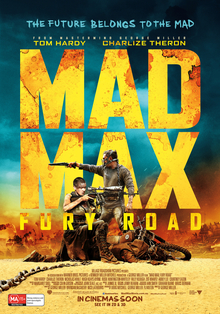

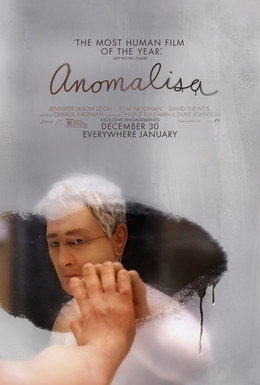
_poster.jpg)
